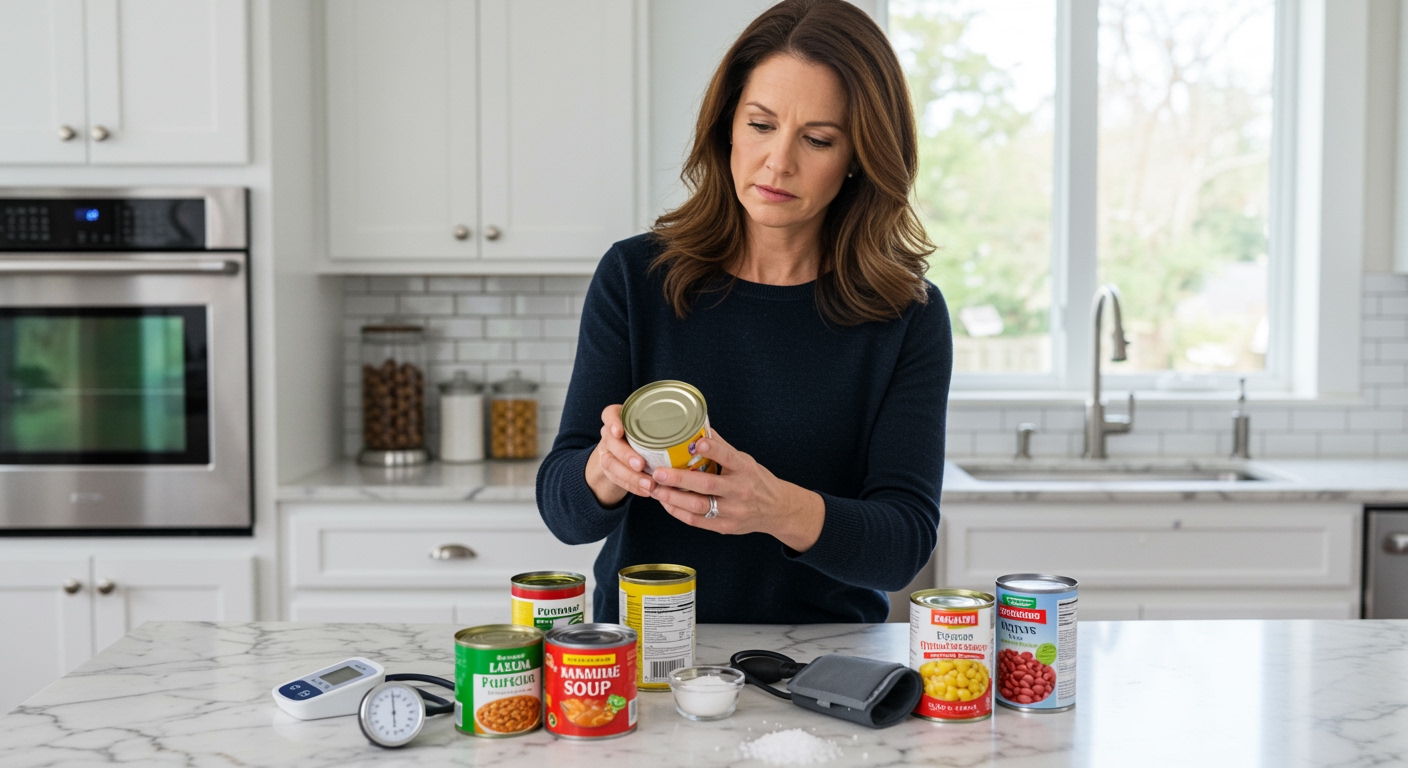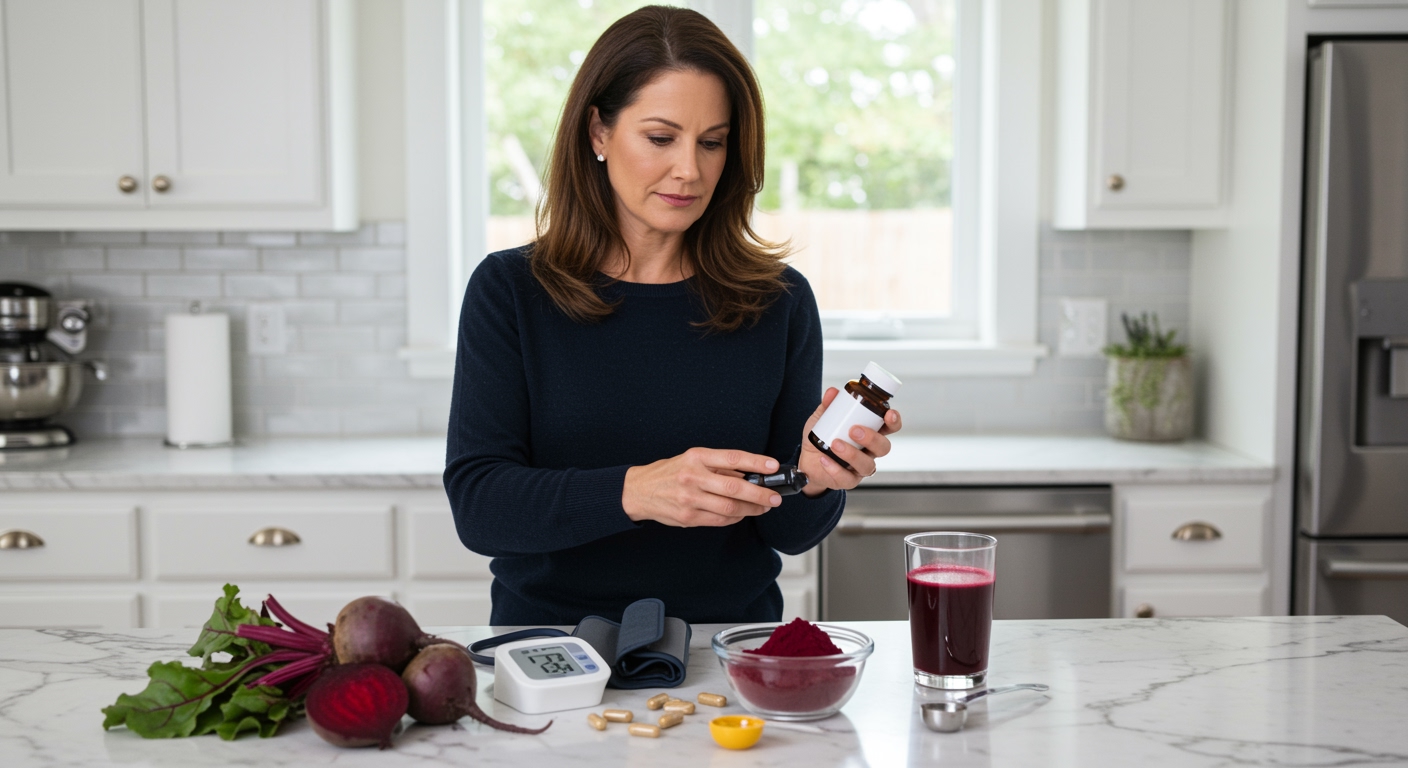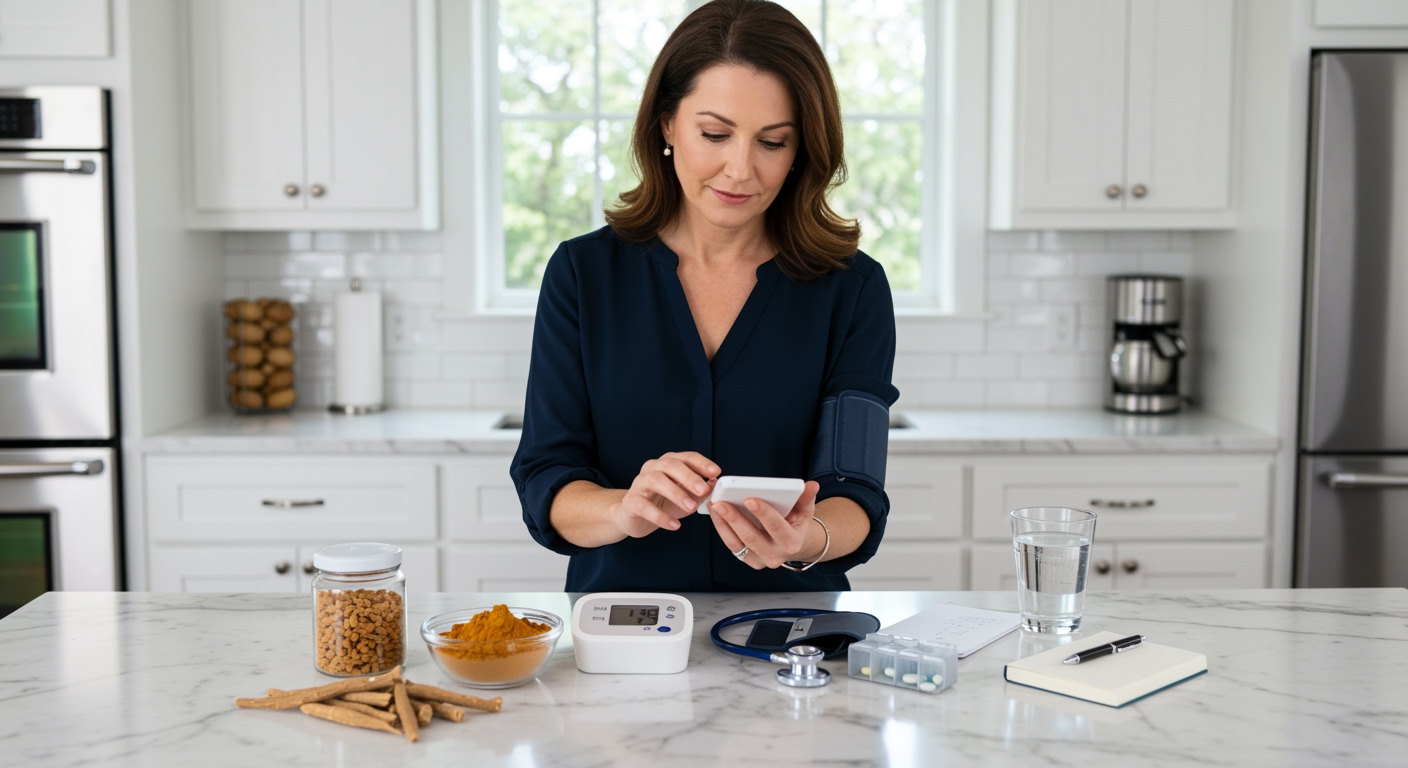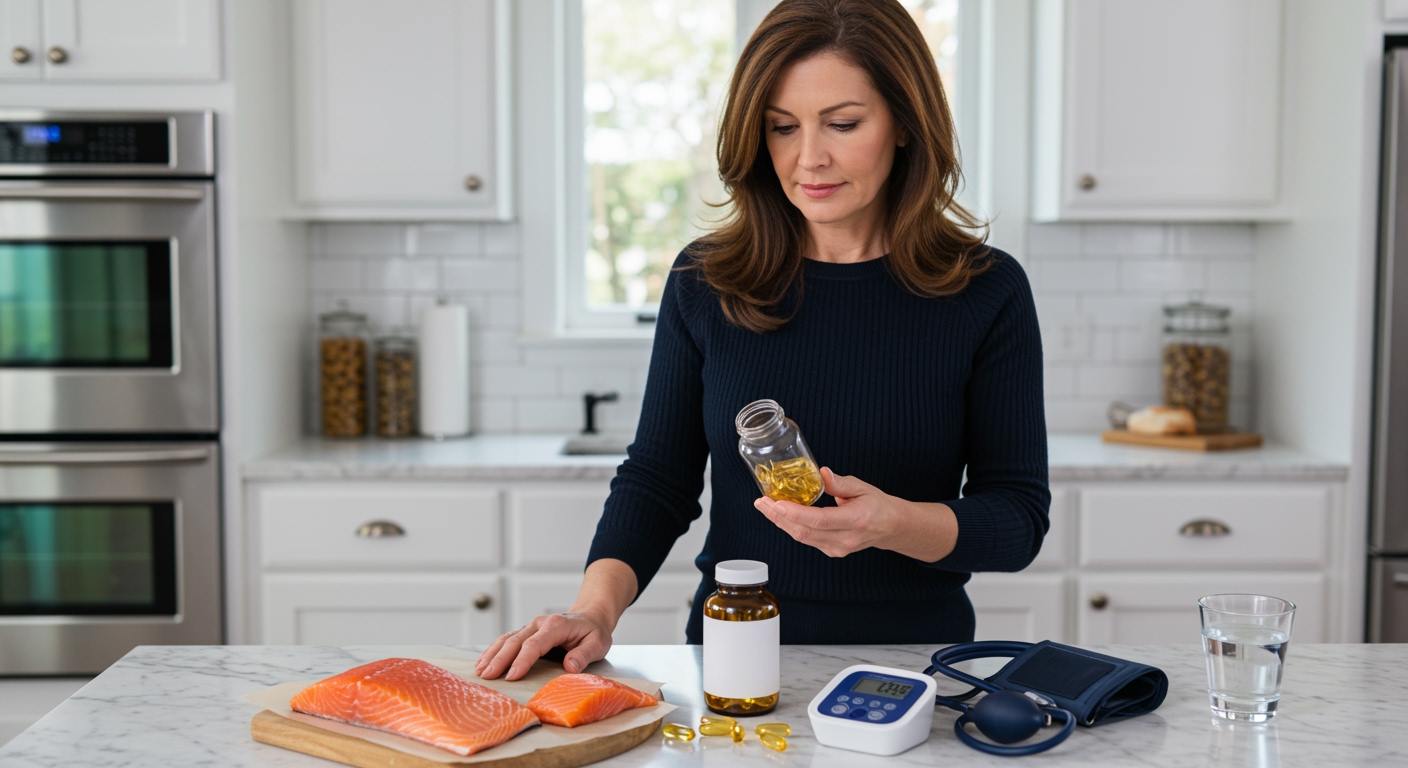✪ Key Takeaway: Most canned foods are loaded with sodium and should be limited, but low-sodium varieties can be safe for hypertensive patients.
Introduction
Your doctor just told you that your blood pressure is too high and you need to watch your sodium intake.
You stand in your kitchen looking at shelves full of canned soups, vegetables, and beans wondering if these convenient foods are now off-limits forever.
Hi, I’m Abdur, your nutrition coach and today I’m going to explain exactly which canned foods you should avoid with high blood pressure and which ones can still be part of your healthy eating plan.
Why Do Canned Foods Contain So Much Sodium?
Food companies add massive amounts of sodium to canned foods for three main reasons.
First, sodium acts as a natural preservative that prevents harmful bacteria from growing inside the can.
Second, salt enhances flavor and makes bland foods taste more appealing to your taste buds.
Third, sodium helps maintain the texture and appearance of foods during the canning process.
A single cup of canned soup can contain up to 1,200 milligrams of sodium, which is more than half your daily limit.
Your kidneys struggle to process this sodium overload, causing your body to retain extra water.
This extra fluid increases the volume of blood flowing through your arteries, which directly raises your blood pressure and puts strain on your heart.
✪ Fact: Regular canned soup contains 20 times more sodium than homemade soup made with fresh ingredients.
Which Canned Foods Are The Worst Offenders?
Canned soups top the list as the highest sodium offenders in the grocery store.
Most varieties contain between 800 to 1,200 milligrams of sodium per serving, with some cream-based soups reaching even higher levels.
Canned vegetables with added salt come in second place, containing 300 to 600 milligrams per half-cup serving.
Canned beans and legumes often contain unnecessary sodium that gets added during processing, even though beans naturally contain almost no sodium.
Canned meats like chicken, beef, and fish are loaded with sodium from brining solutions used during processing.
Canned pasta sauces contain hidden sodium from tomato paste, herbs, and flavor enhancers that manufacturers add.
Even canned fruits can contain sodium when packed in certain syrups or when salt is added as a preservative agent.
✪ Pro Tip: Always compare sodium content between different brands as levels can vary by 300-500 milligrams for the same product.
Are There Any Safe Canned Food Options?
Yes, several canned food options can fit into a heart-healthy diet when you choose wisely.
Look for products labeled as no salt added, low sodium, or reduced sodium on the front of the can.
Canned tomatoes without added salt contain only 10-20 milligrams of sodium per serving compared to 300-400 milligrams in regular versions.
No-salt-added canned beans provide excellent protein and fiber with less than 50 milligrams of sodium per half cup.
Canned fish packed in water without added salt offers heart-healthy omega-3 fatty acids with minimal sodium content.
Fresh-packed canned fruits in their own juice contain virtually no sodium and provide essential vitamins and minerals.
Some specialty brands now offer organic options with significantly lower sodium levels than conventional canned foods.
✪ Note: Rinsing regular canned beans and vegetables under cold water can remove up to 40% of their sodium content.
How Much Sodium Should You Limit Daily?
The American Heart Association recommends that people with high blood pressure limit sodium to 1,500 milligrams per day.
This strict limit means that just one can of regular soup could use up your entire daily sodium allowance.
Your body only needs about 500 milligrams of sodium daily to function properly, which shows how excessive most processed foods are.
When you consume more than 2,300 milligrams daily, your kidneys cannot eliminate the excess sodium efficiently.
This sodium buildup causes your body to hold onto extra water, increasing blood volume and putting pressure on artery walls.
Studies show that reducing sodium intake by just 1,000 milligrams daily can lower systolic blood pressure by 5-6 points.
Tracking your daily sodium intake helps you understand which foods contribute most to your total consumption and where you can make improvements.
✪ Fact: Most Americans consume 3,400 milligrams of sodium daily, which is more than double the recommended limit for hypertensive patients.
What Are Better Alternatives To Canned Foods?
Fresh vegetables provide the same nutrients as canned versions without any added sodium or preservatives.
Frozen vegetables offer convenience similar to canned foods but typically contain little to no added salt.
Making homemade soup allows you to control exactly how much salt goes into your food while maximizing flavor with herbs and spices.
Dried beans and legumes require more preparation time but give you complete control over sodium content.
Fresh fish and poultry provide high-quality protein without the sodium overload found in canned meats.
Batch cooking and freezing your own meals creates convenient options that rival canned foods for quick preparation.
Using a slow cooker or pressure cooker makes it easy to prepare large quantities of low-sodium meals that you can portion and store.
✪ Pro Tip: Freeze fresh herbs in ice cube trays with olive oil to add flavor to homemade meals without any sodium.
The Bottom Line
Most regular canned foods contain dangerous amounts of sodium that can spike your blood pressure and harm your heart health.
Your health is worth more than convenience, so choose fresh foods whenever possible and read every label carefully.
I would love to hear about your experience with managing sodium intake or any questions you have about making heart-healthy food choices in the comments below.
References
At NutritionCrown, we use quality and credible sources to ensure our content is accurate and trustworthy. Below are the sources referenced in creating this article:
- Medical News Today: Foods High in Sodium
- IC Family Medicine: 8 Foods to Avoid if You Have High Blood Pressure
- UC Davis Health: Your Guide to Low Sodium Eating and How to Lower Blood Pressure
- NHLBI: DASH Eating Plan





